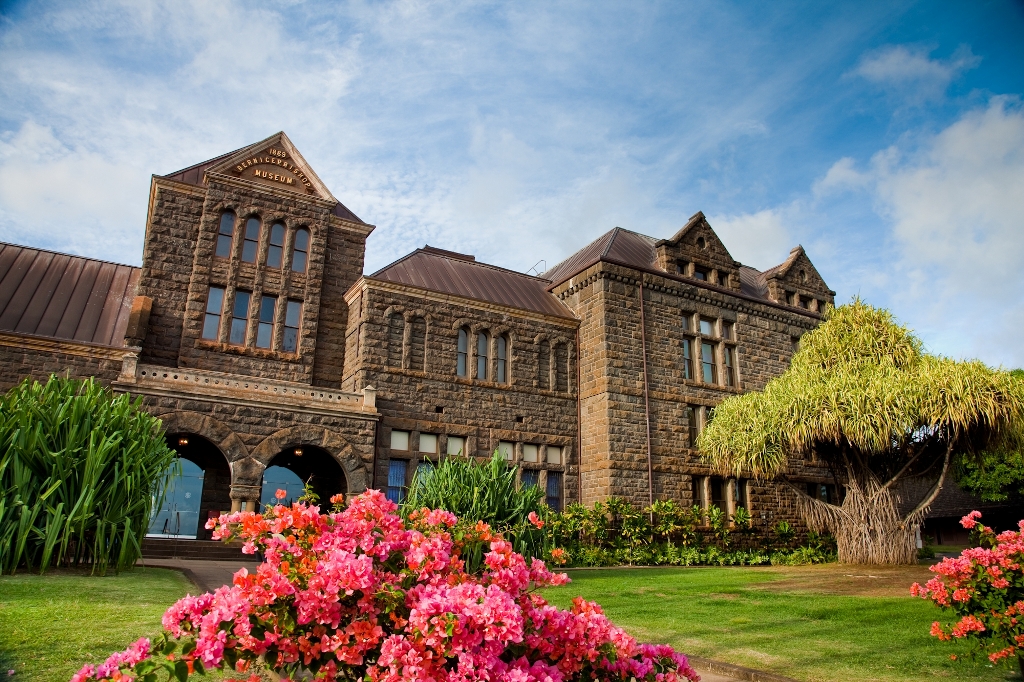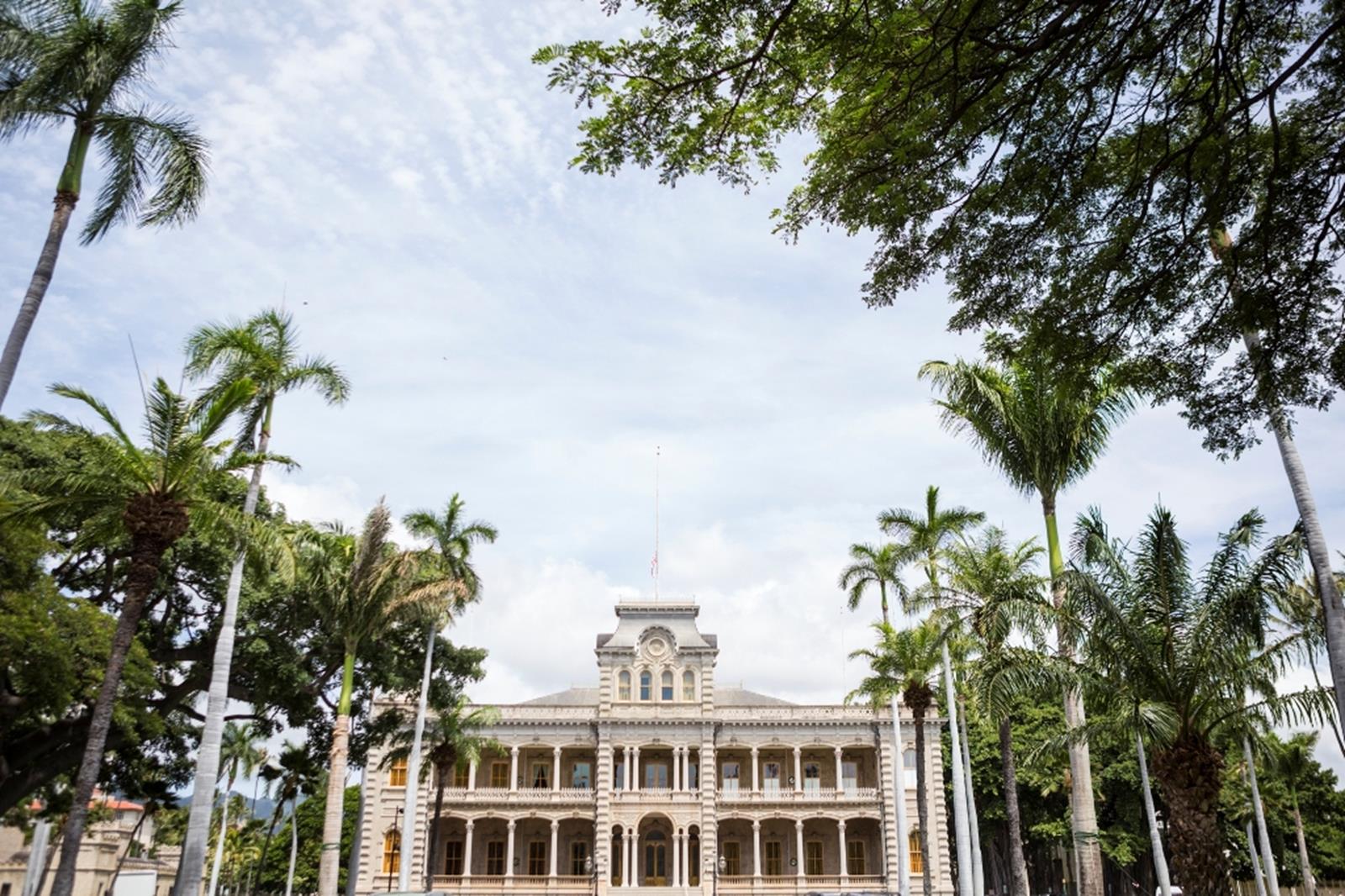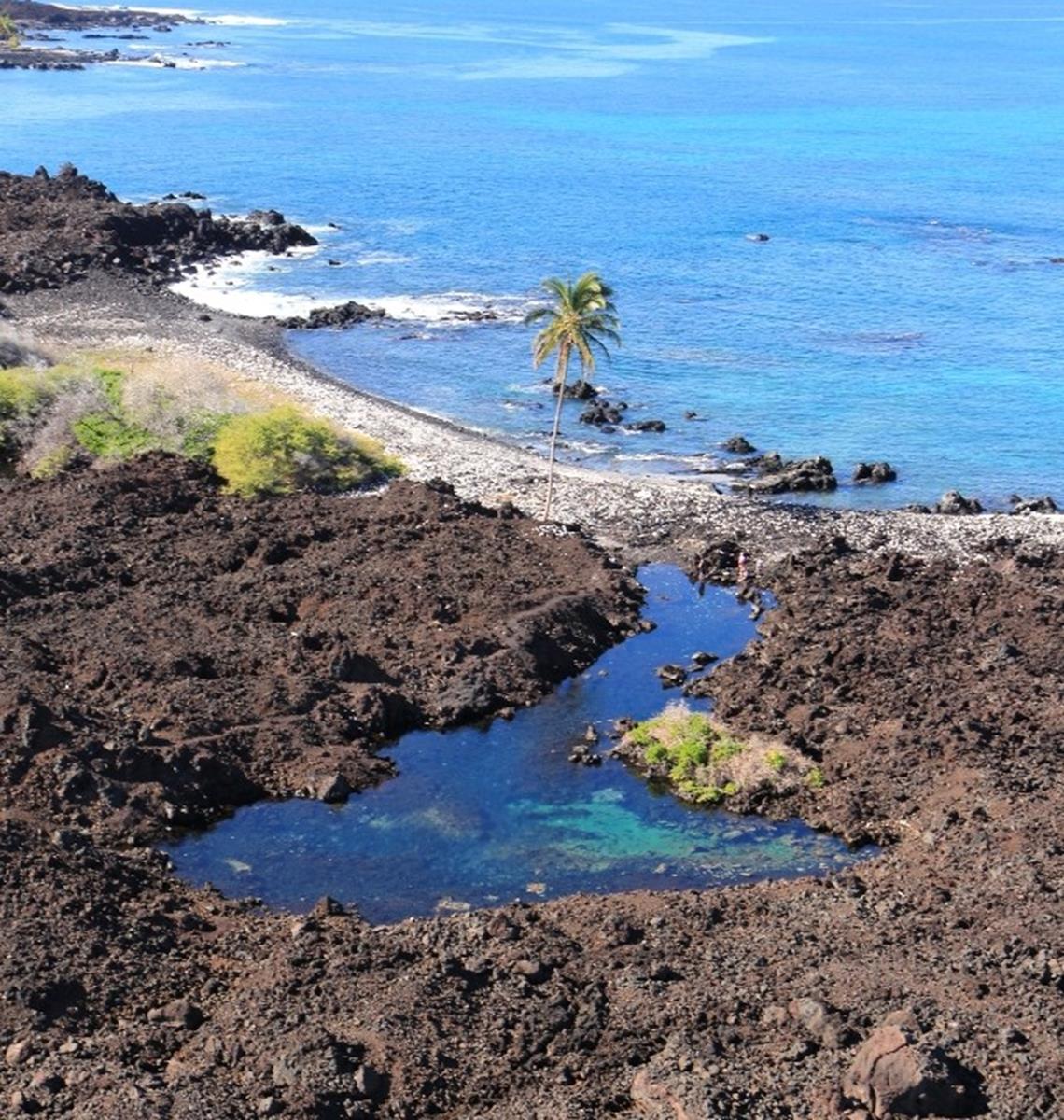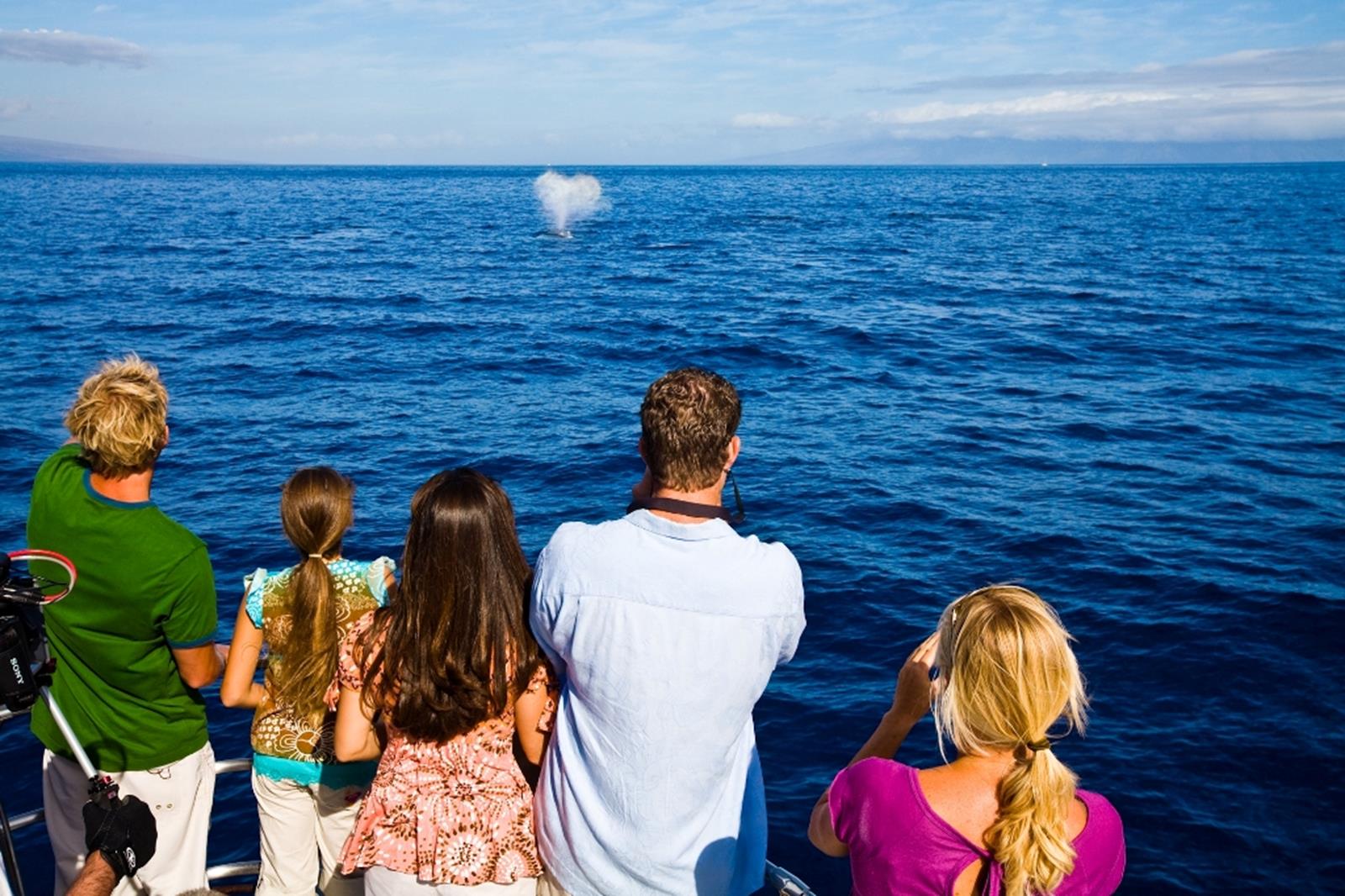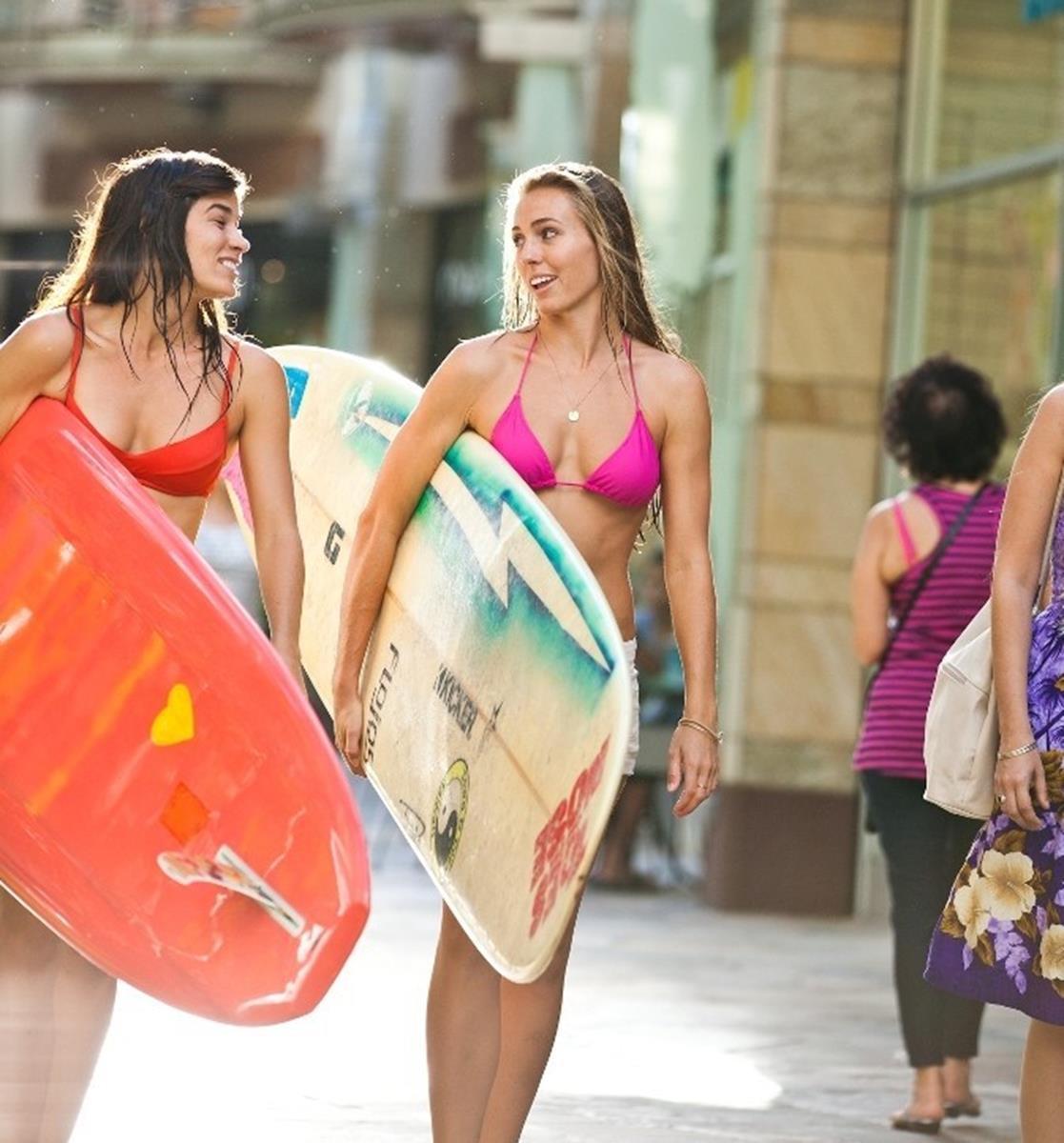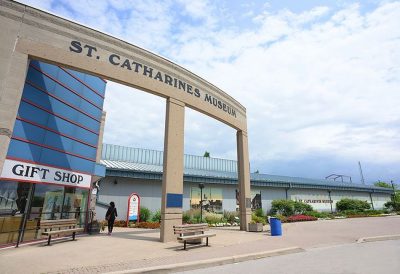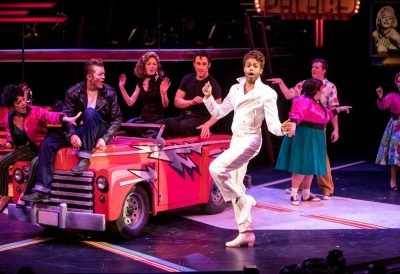Hawaii is known for many things: its Polynesian culture, fusion-esque food (from before the time that fusion was a thing), once-on-a-planet ecology, and beaches, surfing and water sports. Given that almost anything on this archipelago can easily have a historical, environmental or scientific lesson attached to it, taking your student travel group to explore Hawaii is all kinds of awesome, no matter how you slice it.
To Start Your Student Travel Experience: Two UNESCO World Heritage Sites
Hawaii is one of a very few states to have multiple World Heritage Sites. In this case, both are located near Hilo on the big island of Hawaii.
At times, touring Hawaii Volcanoes National Park has been compared to driving through a volcano. This 333,000-acre park contains two active volcanos, one of which has been erupting since 1983. (Don’t worry; it’s still safe to visit!) The park offers chances to hike through a multitude of natural beauty including volcanic craters, deserts, rainforests and, yes, a lava tube. There are on-site muses to continue the educational side of the experience.
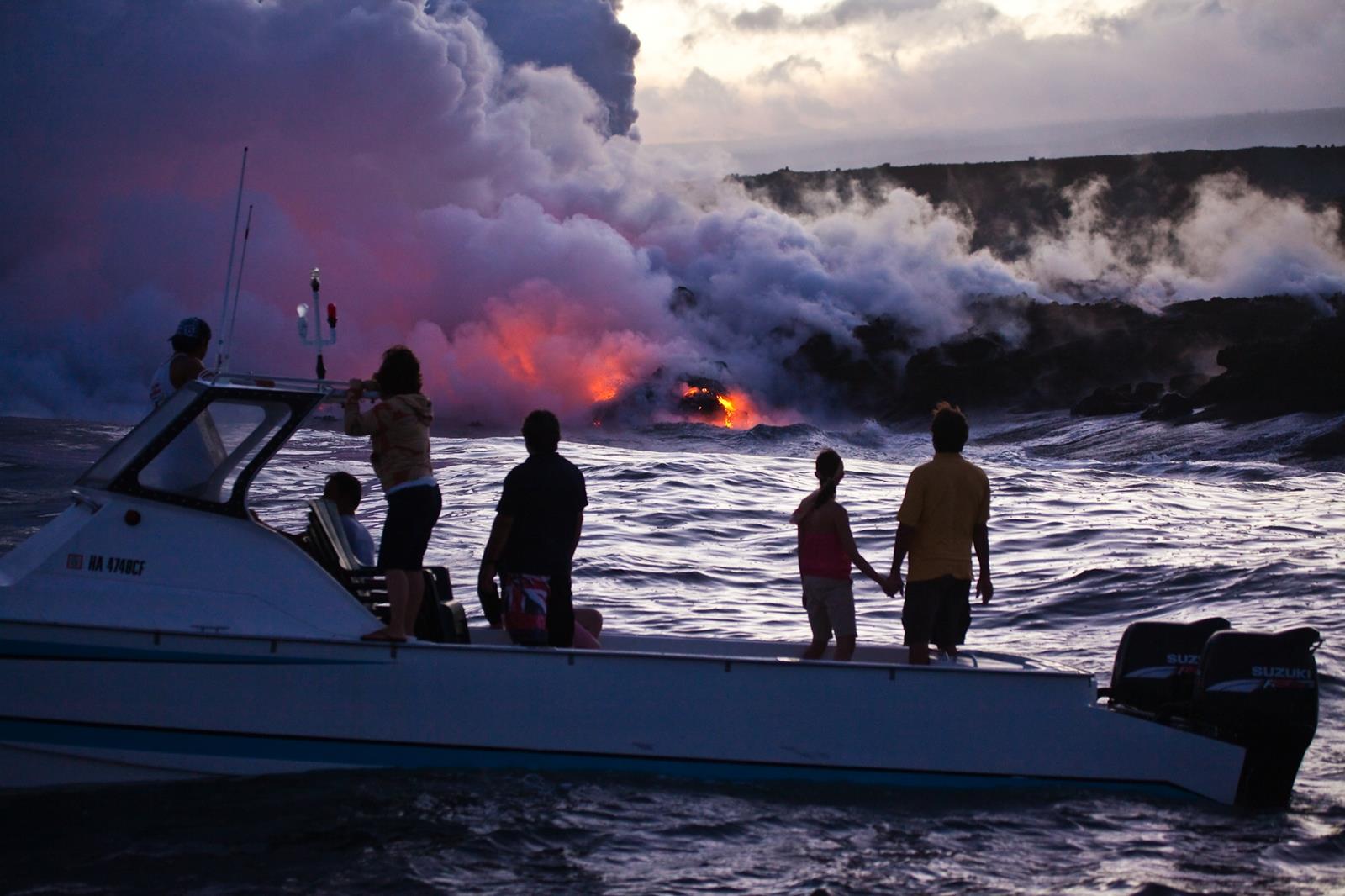
Boaters watching lava enter the ocean at Hawaii Volcanoes National Park. Credit: Hawaii Tourism Authority (HTA)/Tor Johnson Island.
A visit to the largest conservation area in the U.S., Papahanaumokuakea Marine National Monument, is a great way to learn a lot about the natural wonders of these islands. The 139,797-square-mile area is home to extensive coral reefs. Within the reefs can be found over 7,000 different species, about 25 percent of which are found only in Hawaii. The conservation area also embraces sites that have great cultural spiritual significance. Visiting the Mokupāpapa Discovery Center in downtown Hilo can help students make sense of this massive space. It features interactive displays, a theatre, an aquarium and other exhibits.
Islands of History in the Stream Of Time
Any student of history won’t be able to visit Oahu without seeing Pearl Harbor. Now a National Historic Landmark, this is a thought-provoking collection of five sites associated with World War II: the USS Arizona Memorial, USS Bowfin Submarine Museum & Park, the Battleship Missouri Memorial, USS Oklahoma Memorial and the Pacific Aviation Museum. This last destination, located within disused airplane hangars on Ford Island, is a hands-on museum experience with interactive exhibits and authentic WWII planes and artifacts.
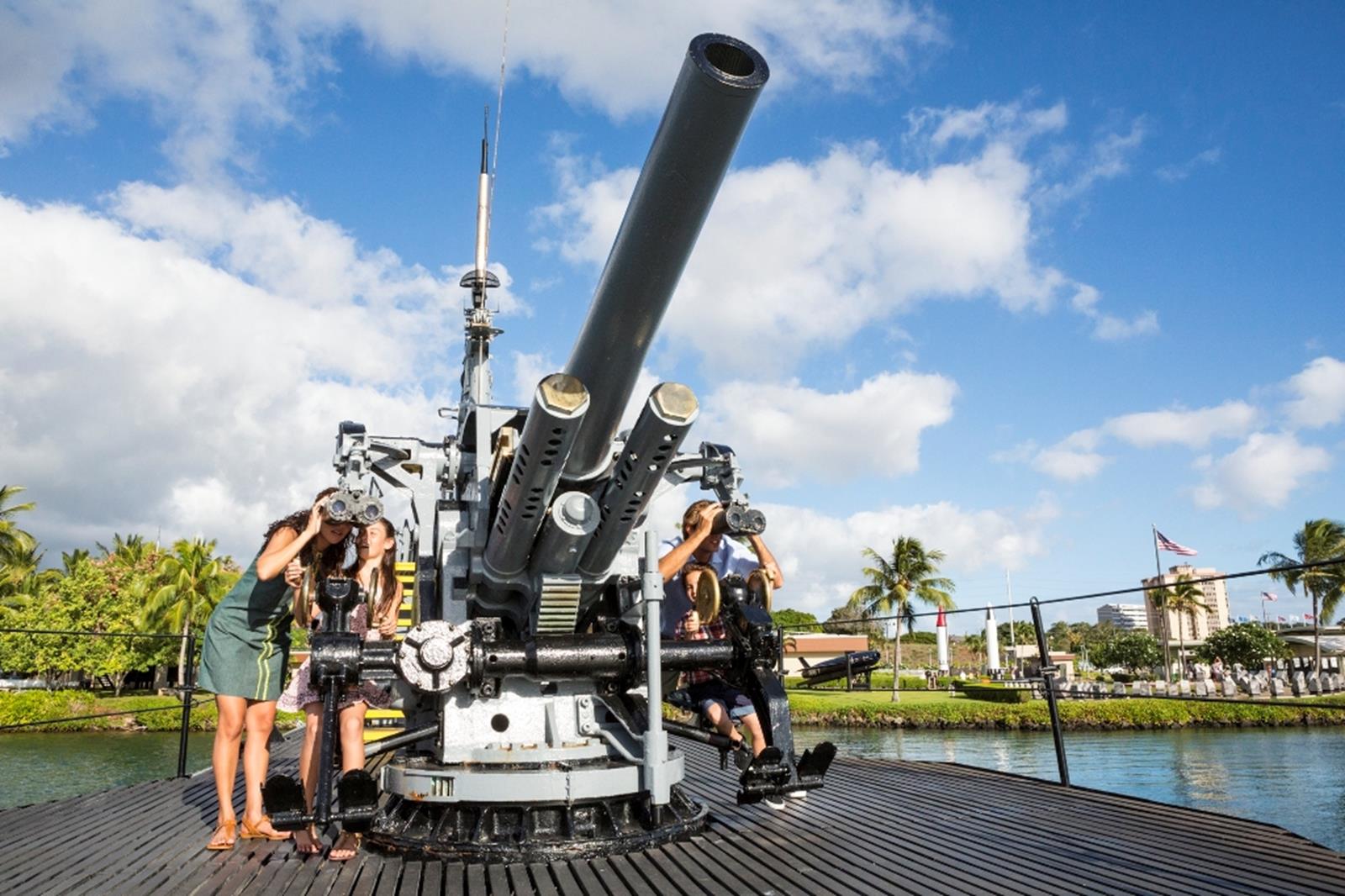
Family explore the deck of the USS Bowfin at Pearl Harbor. Credit: Hawaii Tourism Authority (HTA)/Tor Johnson Island.
In downtown Honolulu, groups can visit the only official royal residence in the nation: Iolani Palace. Built as a home for the last two rulers of the Kingdom of Hawaii, this palace was allowed to fall into disrepair, restored in the 1970s, and currently serves as a National Historic Landmark and a look into Hawaii’s past. It’s also located close to a cluster of other important Hawaiian landmarks, including the State Art Museum, Kawaiahao Church and the Hawaiian Mission Houses Historic Site and Archives.
Oceanfront Learning Opportunities
Time spent at the pool is always a highlight for student groups, but in Hawaii you can do one better: the Pacific Ocean. Whether your group is looking for big-time surfing or some relaxing snorkeling—or almost anything else that can be done on water—chances are you’ll find a Hawaiian beach to suit. In Oahu, the North Shore of Waimea Bay draws experienced big wave surfers, while Waikiki Beach’s gentler swells are better for beginning board riders. Kona Coast is ideal for snorkeling or even scuba diving.
If your group would rather stay dry(ish), whale watching is a popular on-the-water activity in Hawaii—although in certain places, you may be able to see these giants without leaving land. For an up-close view, you’ll want to book one of the many whale watching tours.
In Homage to A Unique Culture
For an overview of Hawaii’s complex and ancient culture, take your group to the Polynesian Cultural Center on Oahu’s North Shore. This is the state’s top tourist attraction, and it takes multiple approaches to teaching visitors about their destination’s background. The Ali’i Luau blends traditional Hawaiian cuisine and entertainment; the center’s lagoon hosts a daily Canoe Pageant; and the theatre shows a movie. But that’s not all. There’s also a live performance and a marketplace where visitors can purchase traditional Polynesian goods.
Anna Ranch Heritage Center, near the Kohala Mountains on the Island of Hawaii, gives guests the chance to learn about another important aspect of Hawaii’s culture: ranching. Named after pioneering paniolo (Hawaiian cowboy) Anna Perry-Fiske, this national historic registered-site is still an active ranch as well as a museum and tribute to one of Hawaii’s revered community leaders.
Finally, groups are encouraged to spend some time at Honolulu’s Bishop Museum. This is perhaps the biggest repository of Hawaiian cultural artifacts, including personal items belonging to the museum’s namesake, Princess Bernice Pauahi Bishop. Interactive presentations and live exhibits bring this bit of the past into clear focus for today’s students.
Food That Tells Your Student Travelers a Story
One of the best (and most enjoyable) ways to get to know a place is through its food, and Hawaii is no exception. With a cuisine that’s a bit familiar, a bit exotic and entirely distinct, your group really shouldn’t leave without trying the fare. You can scout out well-known restaurants yourself. Helena’s Hawaiian Food in Honolulu, for example, was featured on Man vs Food. Or opt for a prearranged trip. Honolulu’s Aloha Food Tours offers two- to three-hour walking tour; Oahu’s Hawaii Food Tours provide several options and include transportation.
And let’s not forget Hawaii’s famous (youth-friendly) drink: Kona Coffee. A tour of a coffee plantation adds a nice ecological and agricultural twist to the foodie theme. Check out places like Kona Joe Coffee or Greenwell Farms, both in in Kealakekua on the Big Island. Just call ahead for reservations and enjoy your freshest cuppa yet.
In Hawaii, just about everything your student travel group participates in has a taste of these unique islands about it. Hawaii doesn’t have to fit that “luxurious and flashy vacation” bill; you can easily find affordable experiences that will inspire and last a lifetime. If you’ve pulled off a student trip to Hawaii, what advice do you have? Tell us about your trip below!

